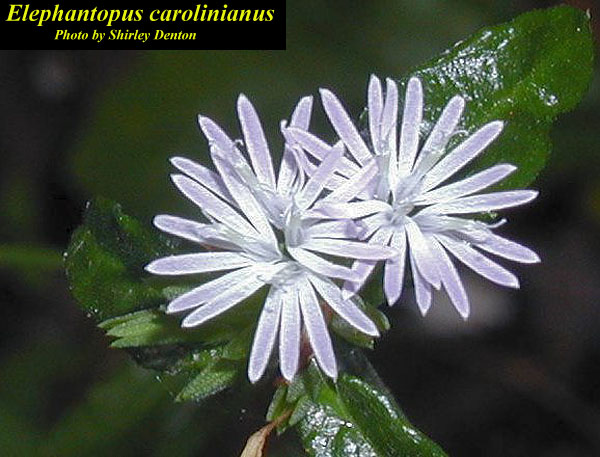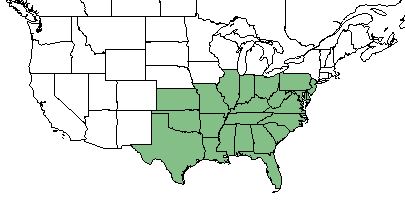Difference between revisions of "Elephantopus carolinianus"
(→Conservation and Management) |
|||
| Line 1: | Line 1: | ||
{{italic title}} | {{italic title}} | ||
| + | Common name: Carolina elephantsfoot <ref name= "USDA Plant Database"/>, leafy elephant's-foot <ref name= "Weakley 2015"/> | ||
<!-- Get the taxonomy information from the NRCS Plants database --> | <!-- Get the taxonomy information from the NRCS Plants database --> | ||
{{taxobox | {{taxobox | ||
Revision as of 12:52, 7 June 2018
Common name: Carolina elephantsfoot [1], leafy elephant's-foot [2]
| Elephantopus carolinianus | |
|---|---|

| |
| Photo by the Atlas of Florida Plants Database | |
| Scientific classification | |
| Kingdom: | Plantae |
| Division: | Magnoliophyta - Flowering plants |
| Class: | Magnoliopsida - Dicots |
| Order: | Asterales |
| Family: | Asteraceae |
| Genus: | Elephantopus |
| Species: | E. carolinianus |
| Binomial name | |
| Elephantopus carolinianus Raeusch. | |

| |
| Natural range of Elephantopus carolinianus from USDA NRCS Plants Database. | |
Contents
Taxonomic Notes
Synonyms: none
Varieties: none
Description
E. carolinianus is a perennial forb/herb of the Asteraceae family native to North America. [1]
Distribution
E. carolinianus can be found along the southeastern United States, from Texas to New Jersey. [1]
Ecology
Habitat
E. carolinianus proliferates in mesic to dry forests and woodlands. [2]
Phenology
E. carolinianus flowers in September and October. [3]
Fire ecology
E. carolinianus is not fire resistant, but has a medium fire tolerance. [1]
Conservation and Management
E. carolinianus is listed as endangered by the New Jersey Office of Natural Lands Management Department of Environmental Protection and Energy, and by the Pennsylvania Department of Conservation and Natural Resources. [1]
Cultivation and restoration
Photo Gallery
References and notes
- ↑ 1.0 1.1 1.2 1.3 1.4 USDA Plant Database https://plants.usda.gov/core/profile?symbol=ELCA3
- ↑ 2.0 2.1 Weakley, A. S. (2015). Flora of the Southern and Mid-Atlantic States. Chapel Hill, NC, University of North Carolina Herbarium.
- ↑ PanFlora Author: Gil Nelson URL: http://www.gilnelson.com/PanFlora/ Date Accessed: 5/21/18